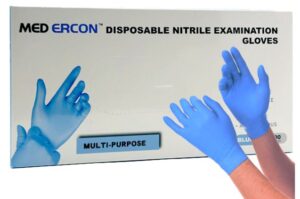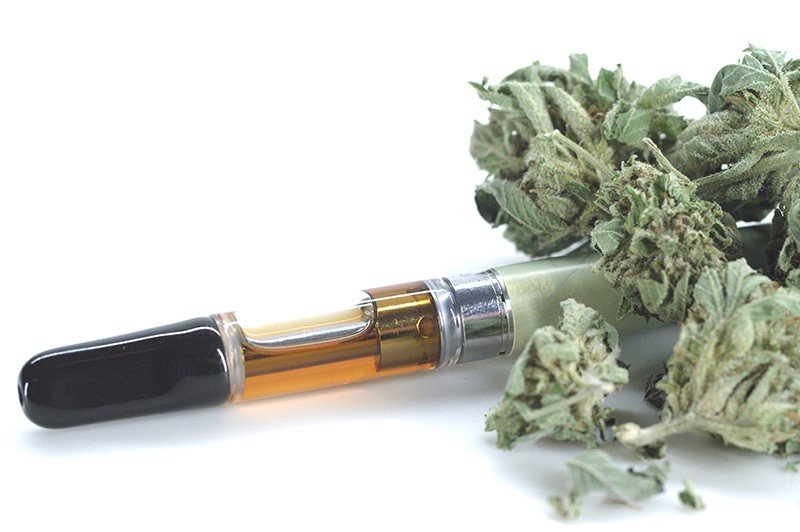Table of Contents
There’s no denying the surge of popularity with Vaping – especially within the past decade or so. These battery-powered devices are almost everywhere to be seen and smelled. Many of today’s popular e-liquids have grown beyond the traditional smoky tobacco and have progressed to less obtrusive flavoring like Strawberry Watermelon POP or even Pink Lemonade Risky.
With these seemingly harmless and admittedly delightful flavors, it’s no wonder why e-cigarettes are the most commonly used forms of tobacco among America’s Youth today. Are these devices as harmless as they appear? Some speculate that vaping does not seem as hazardous as traditional cigarette smoking. If that is true, how harmful can these vapors really be?
Mechanism
Firstly, it’s important to understand the Mechanism behind how e-cigarettes, e-vaporizers, and other electronic nicotine system works.
When it comes to Vaping, the device used is known as a Vaporizer – this is an inhalation device. There are three components to these devices: The battery, atomizer, and the e-liquid. These battery-powered devices are roughly the size of a conventional cigar or larger. Although with the increasing popularity, some devices are becoming smaller. When the user puffs on the device, it activates the component (atomizer) that heats or vaporizes the replaceable liquid inside. The user then is able to inhale the vapors produced and so begins the cycle.
Within the category of Vapes, there have been different designs throughout the years. Cig-a-likes are the first generation devices, only to be followed by Vaping Pens. Since then, Vaping Mods – or Vaping Devices with Modifications. They have been taking the vaping market by storm. A popular modification of the device has maximized energy flow by incorporating a larger battery. Resulting in bigger clouds. Bigger clouds mean more nicotine being produced.
What’s Inside the Vaping Substances?
In order to determine the short and long term effects of Vaping, it’s important to understand what exactly is inside the Vaping Substances. The three main e-liquids used today fall into these categories are
Nicotine – Nicotine is commonly used in e-liquid flavors to resemble the taste of conventional cigarettes. Some who are struggling to quit smoking by helping to gradually lower their nicotine levels have opted to use these e-liquids in their e-cigarettes.
Cannabidiol – CBD Liquid – commonly known as CBD – is actually a naturally occurring component found within the Cannabis plant. Within the Cannabis plant exists THC and CBD. CBD, however, doesn’t give you the euphoric effect that THC gives you. If you are expecting to get high from CBD, you most likely will not. Junella Chin, DO, an osteopathic physician and a medical cannabis expert for cannabisMD states regarding the effects of CBD states that “CBD is the non-psychoactive portion of the plant, so what that means is you won’t have any effects like euphoria.” She goes on to say: “You won’t feel sedated or altered in any way.” Some of the benefits of CBD have been reported to alleviate stress and encourage calmness.
Tetrahydrocannabinol – This is the primary component of Cannabis and is the main ingredient that is responsible for the psychedelic effects. Some users refer to the feeling created by vaping this as a “clean and healthy high”.
Health Risks
With the accessibility, as well as the variety of devices and e-liquids available, vaping is more widespread than ever touching the lives of everyone. Those who are new to smoking, as well as those who are former smokers. For those who are Vaping as an alternative to smoking, this may seem like a viable substitute. For those who are recovering substance abusers: likely the same. However, even though Vaping may seem less harmful than other alternatives, are there any risks that users should be aware of?
According to the information from the Surgeon General via surgeongeneral.gov, the components of an e-cigarette (ultrafine particles, nicotine, and volatile organic compounds) can all pose serious health risks for adolescents and adults.
For adolescents, it is more likely that they will develop a form of addiction if regularly engaging in the use of electronic cigarettes or vaping devices. Information from surgeongeneral.gov mentions:
“Until about age 25, the brain is still growing. Each time a new memory is created or a new skill is learned, stronger connections – or synapses – are built between brain cells. Young people’s brains build synapses faster than adult brains. Because addiction is a form of learning, adolescents can get addicted more easily than adults. The nicotine in e-cigarettes and other tobacco products can also prime the adolescent brain for addiction to other drugs such as cocaine.”
They go on to mention that e-cigarettes are linked to the use of other tobacco products as well as other substances like alcohol and marijuana.
History
Vaping, though recently popular is not a new concept. It has been reported that certain forms of Vaping can be traced back to ancient times. Of course, electronic e-cigarette devices weren’t available prior to this century. However, the practice of inhaling herbs in the form of vapor can be found even as early as the ancient Egyptians. Vaporplants.com reports regarding this topic:
“They would set up a bed of super-hot stones and place plants or seeds on top of them. People would congregate around these stones, and allow the vapors to engulf them. Herodotus, during the 5th century BC, had written accounts of this ancient practice that seems to be rooted in Ancient Egypt”
The first patent granted for an electronic cigarette was recorded in 1930 to a Joseph Robinson. However, this was never commercialized and it isn’t clear whether a prototype was ever built, or if anyone intended to mass-produce it at some point.
Casaa.org further explains events in a more current timeline, citing milestones in vaping history such as:
The 1990s: Numerous patents for nicotine inhaler devices were filed throughout the 20th century and early 2000s by both tobacco companies and individual inventors, with a flurry of activity in the 1990s. Many relied on evaporation or physical propulsion, but a few were fairly similar to modern e-cigarettes
2003: What would become the first commercially successful electronic cigarette was created in Beijing, China by Hon Lik, a 52-year-old pharmacist, inventor, and smoker. He reportedly created the device after his father, also a heavy smoker, died of lung cancer
Does Vaping Show Up on a Drug Test?
Vaping does not show up on a standard drug test. This is because drug tests are designed to detect specific drugs or their metabolites in the body, and vaping does not involve the use of any drugs or illegal substances.
However, it is important to note that some employers or organizations may have specific policies that prohibit the use of e-cigarettes or other vaping products. In these cases, they may conduct specialized tests to detect the presence of nicotine or other substances found in e-cigarettes.
It is also worth noting that vaping can have negative effects on your health, even if it does not show up on a drug test. E-cigarette aerosol can contain harmful chemicals and toxins, including nicotine, which can be addictive and have adverse effects on cardiovascular health. Additionally, the long-term effects of vaping are still not fully understood, and it is important to prioritize your health and wellbeing when considering whether to use e-cigarettes or other vaping products.
Can Nicotine Cause False-Positive Drug Tests?
Urine drug tests are commonly used to detect various substances, including nicotine and its metabolites. Nicotine itself can be detected in urine, but its presence does not usually lead to a positive result on a drug test. However, cotinine, a metabolite of nicotine, is often the target of urine drug tests. Cotinine can be present in the urine of individuals who have processed nicotine, whether through smoking, vaping, or exposure to secondhand smoke. Therefore, nicotine consumption can indirectly influence the results of a urine drug test by causing the presence of cotinine.
What Drug Test Will I Be Taking?
Most employers would have you submit a 12 Panel Urine Drug Test for either pre-employment qualifications or even randomly after beginning your employment. If you complete a standard 12 Panel Urine Drug Test, the Drugs that would be detected would be:
- Amphetamine
- Barbiturates
- Benzodiazepines
- Buprenorphine
- Cocaine
- Ecstasy
- Marijuana
- Methadone
- Opiates/Morphine
- Oxycodone
- Methamphetamine
- Tricyclic Antidepressants
- + EtG
If you notice, THC, a common ingredient in many e-liquids is listed, however, Nicotine is not part of the standard 12 Panel Urine Drug Test. This isn’t to say that Employers do not test for this. Nicotine, though listed by the FDA as an addictive chemical, is under different regulations. Tobacco is legally sold in every country of the world and is not currently listed as an illegal substance in the United States. There are many tests available to determine Nicotine levels, both in blood and in the urine.
An employer may decide to test an applicant for Nicotine and make hiring decisions based on the results. A popular, accurate test used in these circumstances is the Cotinine Test Strips (Tests for Nicotine in Urine). Cotinine is an alkaloid found in tobacco and is also the predominant metabolite of nicotine. These tests are fast and accurate so it’s important to consider your consumption if you wish to receive a negative result.
Vaping – Your Test Results
Though Vaping is more popular than ever, the ingredients within the e-liquids used in the Vaporizer devices are in fact enough to show a positive reading on Urine Drug Tests. Especially if the user is regularly vaping and consuming these substances. As mentioned, if you or someone you know is concerned with your test results, the best way to find out how you will fare is to take one of the listed Drug Tests in the convenience of your own home.
If you wish to purchase one of our 12 Panel Urine Drug Test, or our Cotinine Test Strips from 12 Panel Now, use our special promo code: DISCOUNT1119 during checkout to receive a special discount! ($10 OFF purchases of $50 or more!)




























